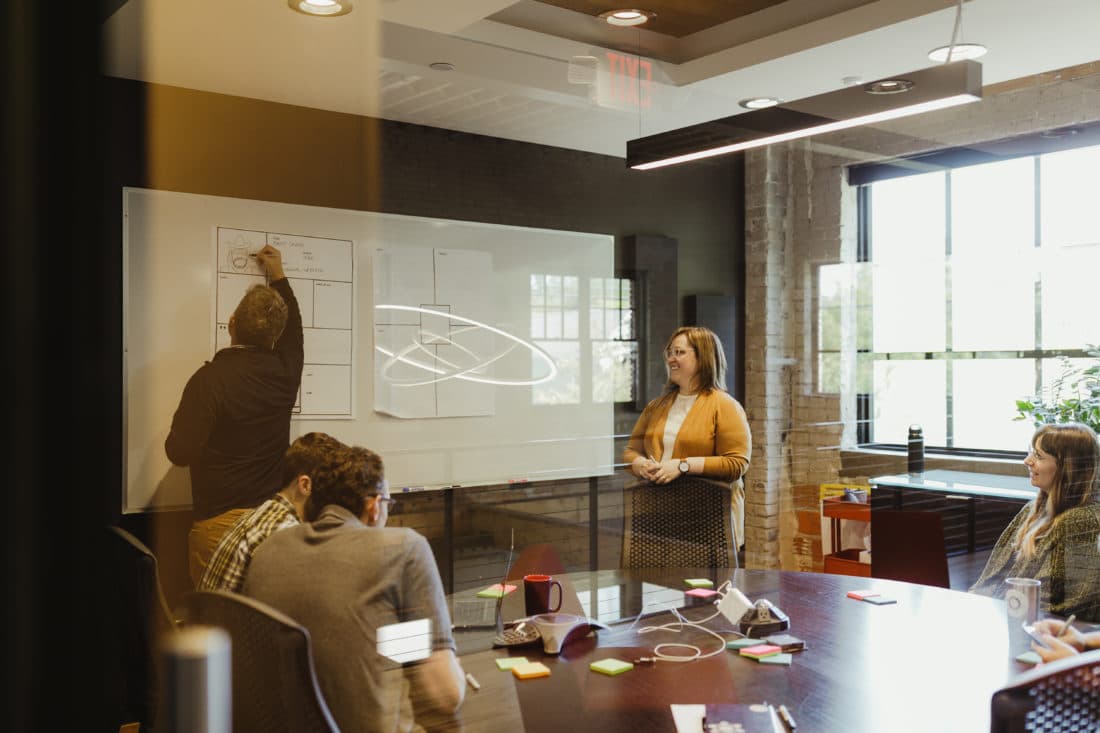A blank canvas. Infinite possibilities. Now… start creating.
This feeling of creating something from nothing is probably familiar to anyone starting a new project. The pressure to create the best work yet (and fast!) can get in the way of just exploring some ideas.
When I’m seeking inspiration, I look for threads to pull — to explore, research, and get immersed in the type of work I’m designing. Below are some of my tried-and-true idea starters for any new design project.
1. Discovery Meetings
Getting some face time with the client early in the process not only provides an opportunity to learn about the project, but it gives us time with the experts. Our clients are passionate problem solvers who know their industry. This conversation can provide all kinds of inspiration, including:
- Jargon – What terms are unique to this industry? How might these terms or workflows manifest in the user experience?
- Brand – Sometimes, simple things like brand colors can open the door for some visual inspiration.
- Word List – Make notes of the words that are used to describe the end goal. Terms like “connected,” “layered,” dare I say, “pop of color” can give a nod towards visual cues.
2. Out-of-Industry Examples
My favorite. Most challenges aren’t new (i.e., process, people, data, or education challenges). Chances are, there is an example of a company in another industry that has solved a similar problem, and maybe you can learn from their approach.
- What is the real root of the challenge of this project? How might people get the most value from this new service or product?
- Subscribe to some innovation or trends blogs or publications and look out for the business spotlights. These are typically companies offering a service with a unique twist.
3. Voice & Tone
If your project had a tone of voice, what feeling should it convey? Is it trust, confidence, hope, playfulness, curiosity? Make a short list and gather images, patterns, and colors to build out each concept. This could be really rough and quick with swatches thrown together. Doing the work will start to reveal insights about what conveys the feeling you want, and you can then carry those elements through to the design.
4. New Experiences
Changing up your routine, trying a new hobby, visiting a museum, or traveling to a new city can spark curiosity and ignite some new ideas. The key here is that it doesn’t matter if the new experiences are similar to what you’re designing for or not. The act of getting out of a routine and observing from a new perspective may be just what’s needed.
For those like me who love this phase of the project, the hardest part is knowing when to stop diverging ideas and start converging on the front runners. My goal is to find a few different strong perspectives. Each concept should be valuable even if only to ignite the conversation when presenting to the team.

